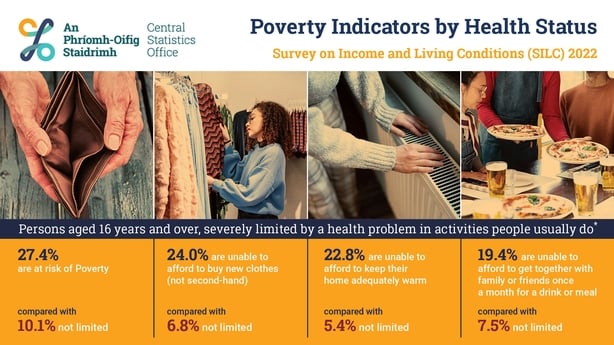People in poor health are at a higher risk of poverty and deprivation, according to the Poverty Indicators by Health Status published as part of the Survey on Income and Living Conditions (SILC) 2022 from the Central Statistics Office.
The report finds that 49.7% of households with someone aged over 16 with a "severe level of activity limitations" consider housing costs a "heavy burden".
This is up from 31.1% in the 2021 SILC, the CSO noted.
Nationally, 39.3% of households surveyed consider housing costs a heavy burden, up from 23% a year earlier.
The percentage of households with a severely limited person who went into arrears with a utility bill at some stage in the previous 12 months rose from 16.5% in 2021 to 20.5% in 2022.
This compares with 7.1% in households where no one with limited activity was reported.
Today's survey also finds that 22.8% of households with a severely limited person were unable to keep their home adequately warm compared to a rate of 5.4% for households where no limited activity issues were reported.
The at-risk poverty rate for those with a self-reported chronic illness was 18.6% compared to 10.3% for those with no chronic illness.

The enforced deprivation rate is also starkly higher for those who are severely limited.
Enforced deprivation is someone who experiences two or more of 11 types of deprivation which include whether or not you can afford to replace worn out furniture, buy new clothes or go out once a month for a drink or meal with family or friends.
The enforced deprivation rate for those who are severely limited rose from 33% in 2021 to 43.7% in 2022. By contrast, the rate for those who are not limited was 13.4%, up from 10.2% in 2021.






